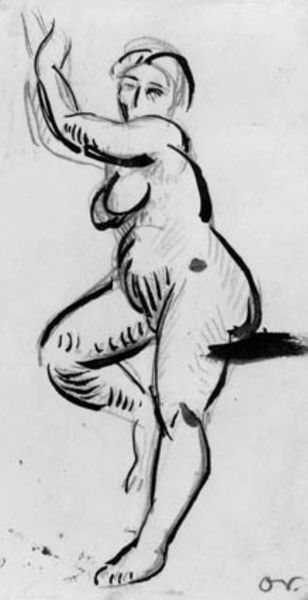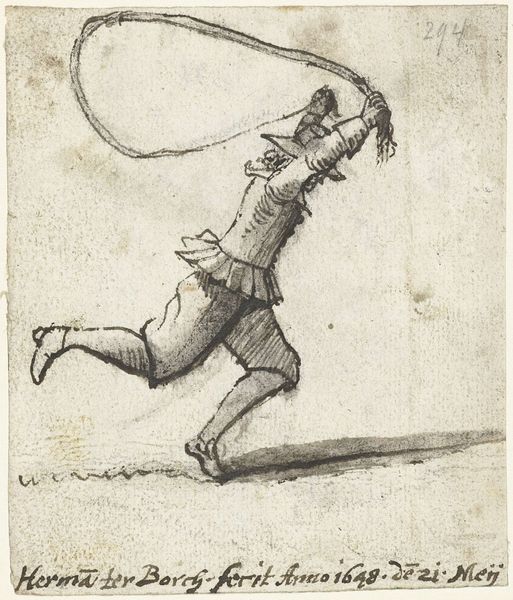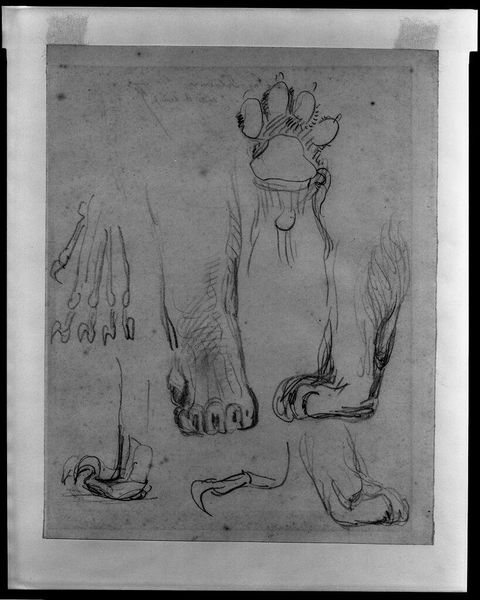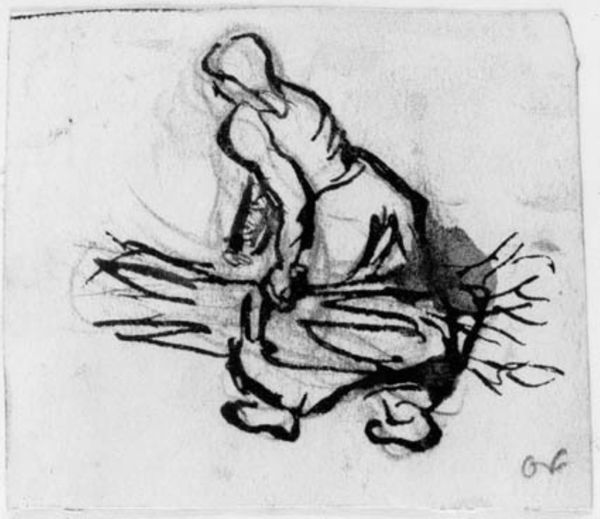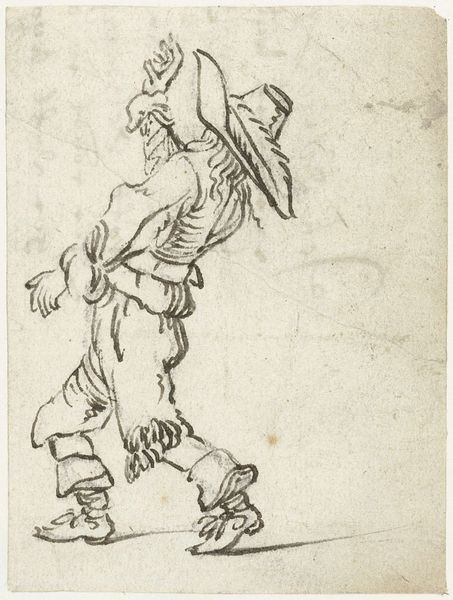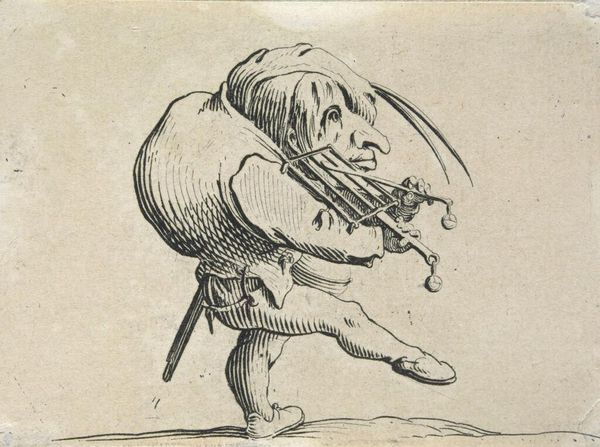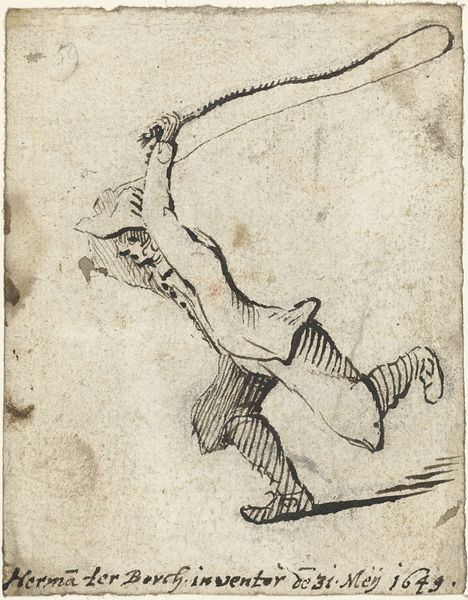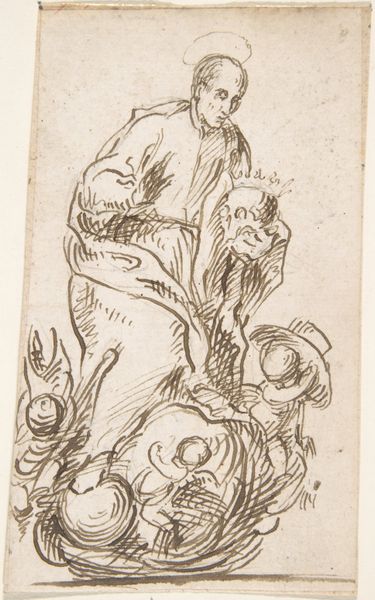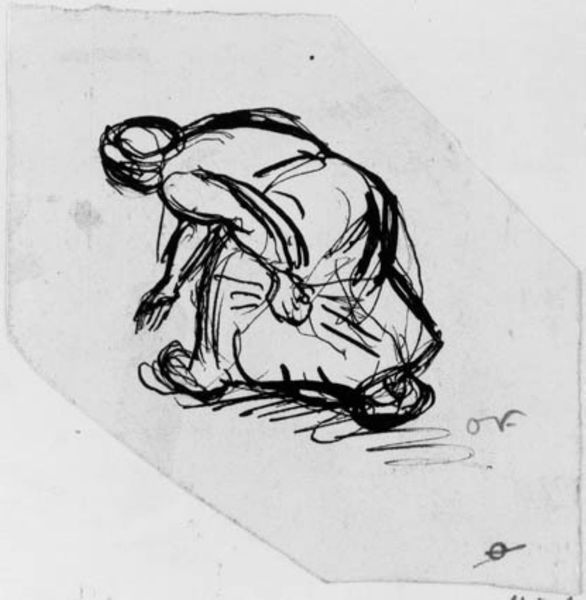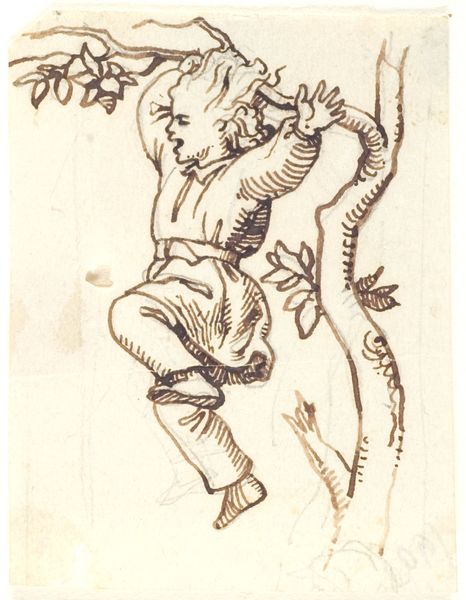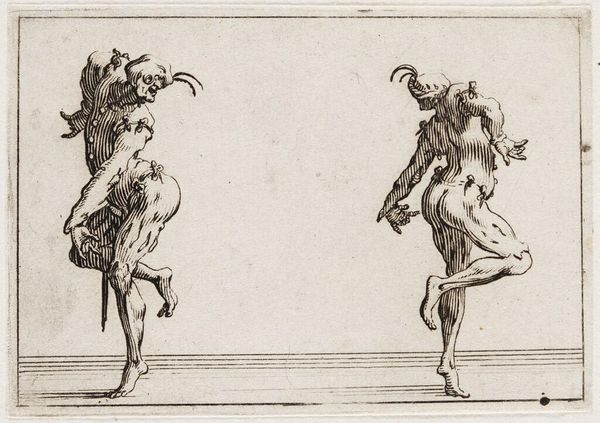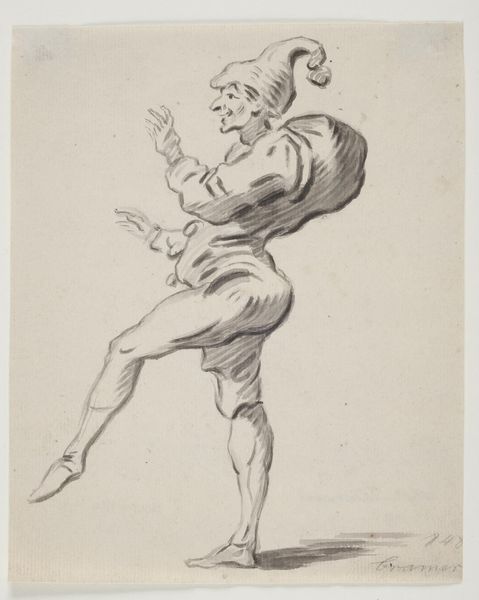
drawing
#
drawing
#
figuration
#
abstraction
Dimensions: 67 mm (height) x 60 mm (width) (bladmaal)
Curator: This is Othon Friesz's "Studie af en mand der bærer en træstamme," or "Study of a Man Carrying a Tree Trunk," dating from 1907. Editor: There's such rawness here, an unvarnished power. The figure is abstracted, almost elemental. I sense an exploration of sheer, brute strength—both of the laborer, but also maybe the symbolic weight of labor itself. Curator: It resonates, doesn't it? I see echoes of classical representations of labor—consider the myth of Atlas—but distilled to its bare essence through those thick, almost violent, brushstrokes. The symbolism is embedded not just in the subject, but also in the method, its visual language. Editor: Exactly. And look at how he renders the muscles, these almost cartoonish exaggerations of the shoulders and neck. This isn't just about documenting reality; it feels like a comment on the working class as both strong and burdened. In its quickness, there's almost this feeling of impatience, of needing to show that this type of physical exertion is really consuming, exhausting the subject from inside out. Curator: Certainly. Think about what that would signify to audiences familiar with depictions of peasantry and labor in this period—not romanticizing toil, but stripping back the idealization, presenting the harsh truth through simplification, making him almost a titan holding this weight on his shoulders. The image, while fragmented, projects raw endurance and defiance. The trunk could symbolize any structural component in that man's immediate milieu: whether literally material (like housing) or sociopolitical (like patriarchy). Editor: I find myself thinking about labor movements and proletarian literature of that time and asking: Whose burden is he really carrying? Is he bearing his own burden, a larger burden that impacts people on different positions, or simply one foisted onto his social class, on a system he has little means to oppose? Even the squared paper underneath adds something to that meaning because he's positioned within a sort of grid; within that constraint the figure finds itself confined but carrying onwards regardless. Curator: Fascinating. The grid certainly locks that raw freedom even more, but as the same grid makes up his world it also builds it; without that structure of society this laborer may cease to exist as a definable member of said society. What better way to signify the paradoxes and challenges the common man goes through every day to survive! Editor: Beautiful. Ultimately, it feels like a study in resilience. It shows this heavy symbolic load, while at the same time managing to be an enduring signifier of strength. Curator: Indeed, a powerful encapsulation of man, nature, and societal pressure. Editor: Thanks for that analysis, curator!
Comments
No comments
Be the first to comment and join the conversation on the ultimate creative platform.
